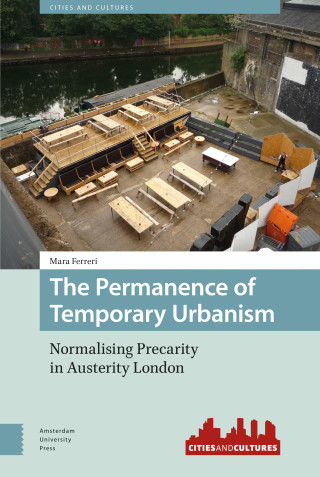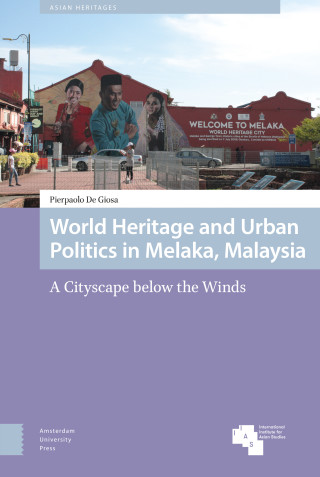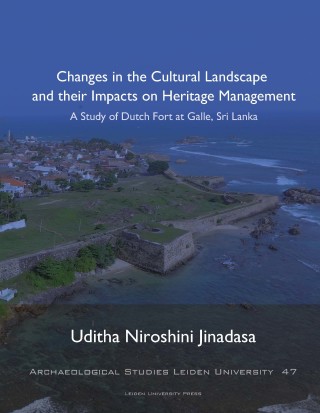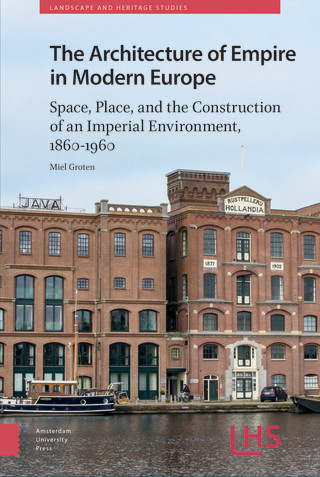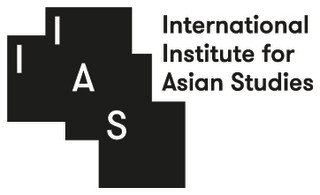

- Title
- Urban Development in the Margins of a World Heritage Site
- Subtitle
- In the Shadows of Angkor
- Author
- Adèle Esposito
- Price
- € 134,00 excl. VAT
- ISBN
- 9789462983687
- Format
- Hardback
- Number of pages
- 340
- Language
- English
- Publication date
- 25 - 05 - 2018
- Dimensions
- 15.6 x 23.4 cm
- Series
- Asian Cities
- Partner

- Discipline
- Asian Studies
- Preview
- Download Preview
- Also available as
- eBook PDF - € 133,99
List of figures
Abbreviations
Glossary of Khmer terms
Acknowledgements
Author's Preface
Introduction
Ordinary diversity? A secondary tourist city in Southeast Asia
Building the city after conflict
Understanding the politics of heritage from the margins
Designing a research trajectory
The content and structure of the book
Chapter 1
'Before you build a wall, think of what you are leaving outside it': The construction of core and marginal spaces in the Angkor region
1.1 The triad of heritage conservation
1.2 Angkor, an international icon
1.3 Shaping the legal and institutional heritage system for Angkor
1.4 Zoning a region shaped by Angkor's legacy
1.5 Expanding the heritage system: From the monument to the landscape
1.6 Contracting the heritage system: From the landscape to the archaeological park
1.7 Fragile and malleable Siem Reap
Chapter 2
The arena of urban planning and the idea of the city
2.1 Everyone wants a slice of the pie
2.2 Planners as cultural brokers
2.3 Spatial layouts and ideas of the city
2.4 The buttresses of planning
2.5 Projects
2.6 The power of action and the power of ideas
Chapter 3
The city as the playground of developers
3.1 Our potential field is tourism
3.2 Reconnecting the disenfranchised links of the economic chain
3.3 An irrational property market
3.4 Negotiating the land laws
3.5 Invisible investment
3.6 A dismal attempt at beautification
3.7 Material effects: Processes and impacts of urban development
3.8 Urban transformation by the local people
3.9 The trajectory of Siem Reap's urban transition
Chapter 4
The architectural space: How contemporary design shapes urban identities and ideas of modernity
4.1 Angkor: From discovery to commodity
4.2 Emotional authenticity
4.3 Taming exoticism
4.4 Representing and planning the tourist space
4.5 All hotels want to be 'Grand'
4.6 The quest for the local
4.7 Spectacular heritage: The museums of Siem Reap
4.8 Thematizing urban heritage for consumption
4.9 Models and imitative trends: Towards a contemporary Cambodian architecture?
Conclusion
Heritage space and non-heritage space: A heuristic model
The trajectories of the 'coloniality of power'
The town, forgotten and yet central
Notes
Bibliography
Reviews and Features
"Esposito’s book offers a meaningful entry to empirically grounded conceptual work on peripheral planning of heritage sites, particularly in Southeast Asia, and therefore makes a useful contribution to the scholarship of regional and area studies." - Achala Gupta, Asian Journal of Social Science Winter 2019
Adèle Esposito
Urban Development in the Margins of a World Heritage Site
In the Shadows of Angkor
This volume addresses the relationship between the UNESCO World Heritage Site of Angkor (Cambodia), and the nearby town of Siem Reap. While previous work on heritage sites has mainly focused on protected areas, this book shifts the attention to the margins, where detrimental, tourism-driven urban development may take place. By delimiting a protected site, a non-heritage space is created in which spatial fragmentation, disruptive development processes, and unjust power plays can occur. In post-war Cambodia, liberalization and collective aspirations for progress have provided a strong incentive for modernization. Controversial interests compete in the arena of urban development, and real estate development prevails over planned growth. At the same time, Siem Reap’s marginal position allows for some freedom in architectural and urban design. In the shadow of institutional control, this architectural space expresses alternative visions of the Khmer heritage and connects them with images of urban modernity.
Author
Adèle Esposito
Dr. Adèle Esposito was trained as an architect and urban planner. She is a researcher at the Research Institute on Contemporary Southeast Asia (CNRS-IRASEC), Bangkok, Thailand. Her research deals with the uses of cultural heritage in the contemporary development of Southeast Asian cities.

